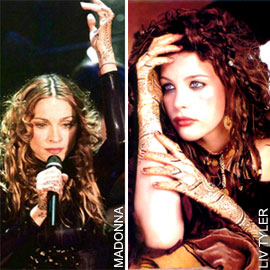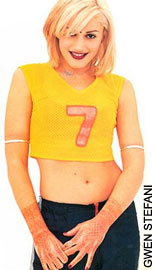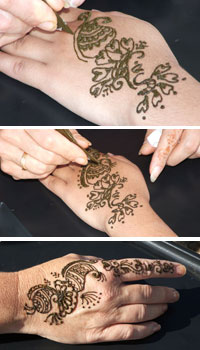Marziya Mohammedali – May 20 2006

Body art has always been popular. From tattoos to piercings, it’s all about making yourself stand out. A popular option in recent times is henna.
You may have seen the women at market days and fairs, applying henna to people’s hands, the rich brown patterns creating an elegant contrast with the skin. Or maybe you’ve wondered about the girls showing off their henna tattoos on the beach, a different design every other week.
Even though it is considered to be a new art form, henna has been around for a very long time. For centuries, henna has been used by the people of South Asia and the Middle East as a form of body art. The rich brown stain it produces allows for temporary designs to be drawn on the skin. It has also been used to colour hair and the henna paste can be applied as a treatment for sunstroke.
In many parts of the world, though, the first thing that comes to mind at the mention of henna is weddings. Using henna to decorate a bride’s hands and feet is a thousand year-old Eastern practice referred to as Mehndi art.
The Indian bride may have moved away from tradition, with dresses and accessories displaying a fusion of Eastern and Western influences, but one thing has stayed the same: henna. The bride’s preparation is incomplete without the intricate patterns symbolising love and destiny.
Far from being confined to the Eastern countries it developed in, it has exploded into a trend that can be seen in many parts of the world, including America, Europe and Australia.
Anahita Irani, a Perth-based henna artist, says that she finds there is more interest in henna in Australia than in her home country of India. “In India, everybody does it, and it’s not a new thing… it’s very common, so you have many people doing it. But in Australia you don’t find many people doing it,” she says.
Perhaps it is this novelty that gives henna its international appeal. Certainly, it does attract attention. The exoticism of the art form, coupled with its symbolic relation with the East, makes it exciting.

According to Irani, another aspect of henna’s popularity is its ‘celebrity factor’. With famous figures like Madonna, Gwen Stefani, Liv Tyler and even Elijah Wood sporting henna designs on various parts of their bodies, it’s no wonder that henna has become so popular. Fans are rushing to copy their favourite celebrities by getting henna designs painted on their skin.
In Western Australia, the demand for henna art has seen the opening of henna studios such as ‘Henna Magic’ in Perth and ‘Henna Moon’ in Fremantle.
Freelance henna artists like Irani are often invited to apply henna at various functions and fairs. Preparing for such an event takes time. Like any other artist, the henna artist must have equipment – the henna paste and the clear plastic cones that are used for application.
The henna paste starts off as a powder derived from the henna plant. While henna powder is available locally, it is also imported from countries such as India and Pakistan. The leaves of the plant are dried and crushed to make henna powder, usually khaki or green in colour, to form the base for all henna products. The powder is then mixed with lime or lemon juice, tea and various natural oils such as eucalyptus and tea-tree oil to form a paste that releases the natural dyes present in the henna.
Each henna artist will have their own method of creating the henna paste, depending on the effect they are going for. A combination of different oils are used to achieved the preferred effect. For some, the colour of the stain takes priority, while others place emphasis on the time it lasts.
The application of henna is also a creative process that is unique to the individual. The different cultural backgrounds of the artists, and to some extent, the clients themselves, all have an impact on henna art.
Contemporary designs are based on different concepts, whereas the traditional designs draw inspiration from nature, modern designs may be abstract and bold, with motifs such as tribal suns.

Henna art is no longer confined to the hands and feet either. People have become more daring and choose to have other parts of their bodies decorated with henna. “Sometimes, it’s strange but some people tell me to do it on their shoulders, and some people tell me to do on their backs, there are all kinds of requests,” says Irani.
She attributes the trend to the connection henna has with the tattoo culture. Just as tattoos are now to be found on every part of the body, henna artists are painting their designs on new canvases.
However, the method of application is completely different. Henna tattoos are created by applying the henna paste directly on to the skin and leaving it to dry. Often, the area is wrapped up in order to lock in heat, as that affects the intensity of the result. When the henna hardens, it begins to flake off, leaving a reddish-brown stain on the skin.
Lasting from a week to several months, henna is a pain free option to tattoos which are created by inserting inks under the skin. While this method creates a permanent design, it is painful. Removal is another problem – whereas a henna design simply wears off and can be replaced by another, an inked tattoo does not.
There is also the fact that some people may be allergic to the pigments used in tattooing ink. This is because of the chemicals present in the ink.
The chances of developing an allergy to a natural henna tattoo are very slim, and symptoms are mild and restricted to irritation of the affected area. Only in extreme cases will something more serious develop.
